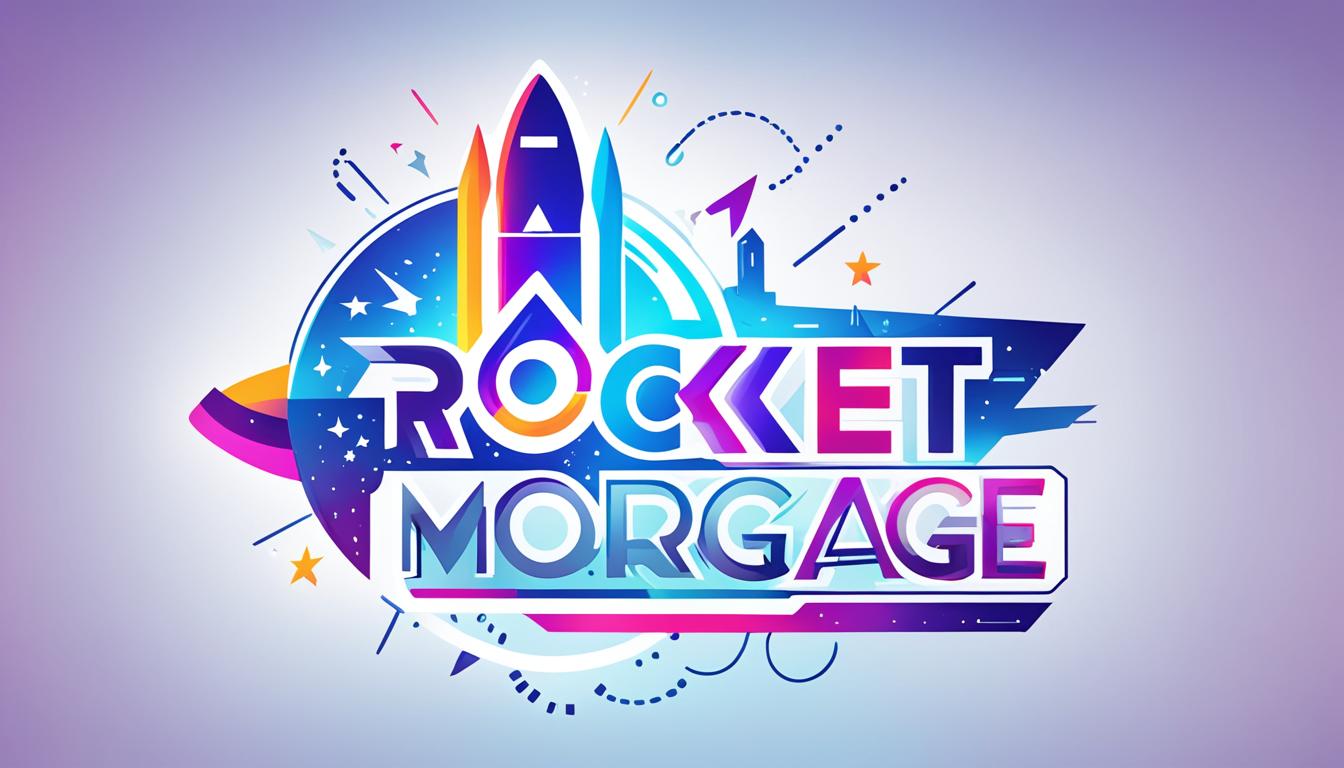Are you a homeowner looking for financial flexibility? Unlocking your home equity might be the solution you need. Rocket Mortgage offers a range of home equity loan options that can help you access the value of your home while providing competitive rates and excellent customer service.
When it comes to home equity financing, Rocket Mortgage stands out as a trusted name in the industry. While they don’t offer home equity lines of credit (HELOCs) themselves, they provide valuable information about how HELOCs work and offer comparisons to other home equity options.
Whether you’re considering a HELOC or exploring other possibilities, it’s essential to understand the ins and outs of each option to make an informed decision. This article will delve into the qualification requirements for a HELOC, the repayment process, the pros and cons, and alternative options.
Key Takeaways:
- Unlocking home equity can provide homeowners with financial flexibility.
- Rocket Mortgage offers valuable information about home equity loans.
- Qualification requirements for a HELOC include good credit, equity in the home, responsible payment history, low debt-to-income ratio, and reliable income.
- A HELOC’s repayment period consists of a draw period and a repayment period.
- HELOCs have benefits such as debt consolidation and flexible use, but they also come with upfront costs and the risk of losing the home.
Qualification Requirements for a HELOC
To qualify for a HELOC, borrowers need to meet specific requirements. These requirements may vary among lenders but typically include the following:
- Good credit score: Generally, a credit score above the mid-600s or above 700 is preferred to qualify for a HELOC.
- Qualifying amount of equity: Homeowners should have a certain percentage of equity in their homes, usually around 15% to 20%.
- Responsible payment history: Lenders prefer borrowers who have a history of making payments on time and managing their debts responsibly.
- Low debt-to-income ratio: It is essential to have a low debt-to-income ratio, which shows the lender that the borrower can manage additional debt.
- Proof of reliable income: Borrowers need to provide documentation to prove they have a steady and reliable source of income to make the HELOC payments.
These qualification requirements for a HELOC are similar to those for refinancing a mortgage. However, it’s important to note that different lenders may have variations in their requirements. Therefore, it is advisable to review the requirements of different lenders to fully understand the options available.
“To qualify for a HELOC, borrowers need to meet specific requirements.”
How Does HELOC Repayment Work?
HELOC repayment involves two distinct phases: the draw period and the repayment period. Understanding how these phases work is essential for borrowers who choose a home equity line of credit. Let’s delve into the details of each period and the mechanics of HELOC repayment.
The Draw Period
The draw period typically spans between 5 and 15 years. During this phase, borrowers have the flexibility to borrow funds from their line of credit as needed. The draw period allows borrowers to make minimum payments or interest-only payments on the amount borrowed, providing more financial flexibility. However, it is important to note that reaching the credit limit requires borrowers to repay some of the balance before being able to borrow additional funds.
The Repayment Period
Once the draw period ends, the repayment period commences. During this phase, borrowers must make full monthly payments that cover both the principal amount borrowed and the accrued interest. It is crucial to be financially prepared for this transition, as the monthly payments will likely increase significantly compared to the draw period. This shift is particularly important for borrowers who made interest-only payments during the draw period, as it marks a significant change in their payment obligations.
The length of both the draw period and the repayment period depends on the specific loan agreement. It is vital for borrowers to review and understand the terms and conditions provided by their lender to ensure they are prepared for the entire repayment process.

The image above illustrates the different stages of HELOC repayment and the transition from the draw period to the repayment period. It visualizes the timeline and the changing payment requirements, helping borrowers visualize the process and plan their finances accordingly.
Pros and Cons of a HELOC
Before considering a home equity line of credit (HELOC), it’s important to weigh the advantages and disadvantages. By understanding the benefits and drawbacks, homeowners can make an informed decision about whether a HELOC is the right financial tool for their needs.
Advantages of a HELOC
- Consolidate Debt: One of the key advantages of a HELOC is the ability to consolidate debt at a lower interest rate. By using the funds from a HELOC to pay off higher-interest debts, such as credit card balances or personal loans, homeowners can potentially save money on interest payments.
- Flexibility: HELOCs offer flexibility in using the funds for various purposes. Whether it’s financing home improvements, paying for education expenses, or covering unexpected medical bills, a HELOC provides access to funds whenever needed.
- Continuous Borrowing: Unlike a traditional loan, a HELOC allows homeowners to continuously borrow against the available credit. As the borrowed amount is repaid, the line of credit replenishes, providing ongoing access to funds throughout the draw period.
- Potential Tax Benefits: If the funds from a HELOC are used for eligible home improvements, the interest paid on the loan may be tax-deductible. This can provide additional financial benefits for homeowners.
Disadvantages of a HELOC
- Upfront Costs: HELOCs often come with upfront costs, including annual fees and origination fees. It’s important to consider these fees when evaluating the overall cost-effectiveness of a HELOC.
- Risk of Losing the Home: Since a HELOC is secured by the home itself, there is a risk of losing the property if payments are not made as agreed. Homeowners should carefully assess their ability to make the required payments before taking on a HELOC.
- Rate and Payment Increases: HELOCs typically have variable interest rates, which means the rate can fluctuate over time. This can lead to higher monthly payments if the interest rate increases during the repayment period.
- Financial Responsibility: It’s important to use a HELOC responsibly and only for financially beneficial purposes. Careful consideration should be given to how the funds will be used and whether they will contribute to long-term financial well-being.
Before applying for a HELOC, homeowners should carefully weigh the pros and cons, considering their financial goals and circumstances. By understanding the advantages and disadvantages, homeowners can make an informed decision about whether a HELOC aligns with their needs and objectives.

Alternatives to a HELOC
If a HELOC is not the right option for accessing home equity, there are alternative options to consider. Each alternative has its own eligibility criteria and considerations, providing homeowners with flexibility based on their specific financial goals and needs.
Cash-Out Refinance
A cash-out refinance is an alternative option that allows homeowners to access their equity by obtaining a new mortgage at a higher loan amount. This option replaces the existing mortgage and provides a lump sum of cash that can be used for various purposes. By refinancing, homeowners can take advantage of potentially lower interest rates while accessing their home’s equity.
Home Equity Loan
Another alternative to a HELOC is a home equity loan, which is a second mortgage with a separate payment and typically higher interest rates compared to a primary mortgage. With a home equity loan, borrowers can receive a lump sum at a fixed interest rate. This option is suitable for those who prefer predictable monthly payments and knowing the exact amount they will receive.
Reverse Mortgage
A reverse mortgage is an option available to homeowners aged 62 and older. It allows them to convert a portion of their home’s equity into cash without the burden of monthly mortgage payments. The loan is repaid when the homeowner moves out of the property or passes away. Reverse mortgages can provide financial flexibility for retirees or those seeking additional income in retirement.
When considering these alternatives to a HELOC, it’s important to thoroughly understand the eligibility requirements, repayment terms, and potential risks associated with each option. Comparing the benefits and drawbacks of each alternative will help homeowners make an informed decision that aligns with their financial goals.
Remember, Rocket Mortgage offers comprehensive information and resources for homeowners exploring these alternatives to a HELOC.

Conclusion
Exploring home equity loan options is a great way for homeowners to access the financial flexibility and unlock the equity in their homes. While Rocket Mortgage doesn’t offer home equity lines of credit (HELOCs), they provide valuable information that can help homeowners understand their options. By familiarizing themselves with the qualification requirements, repayment terms, advantages, and disadvantages of a HELOC, homeowners can make informed decisions about leveraging their home equity.
Fortunately, there are alternatives available, such as cash-out refinancing, home equity loans, and reverse mortgages. Homeowners can consider these options to tap into their home’s equity and meet their financial needs. Whether they choose to work with Rocket Mortgage or explore alternatives from other lenders, there are plenty of home equity loan options for homeowners to choose from.
In summary, homeowners have a world of possibilities when it comes to accessing their home’s equity. By conducting thorough research, understanding the different loan options, and working closely with reputable lenders, homeowners can make confident choices to unlock the financial potential of their homes.
